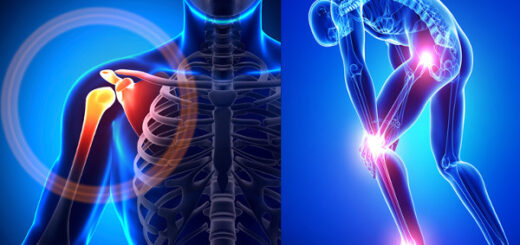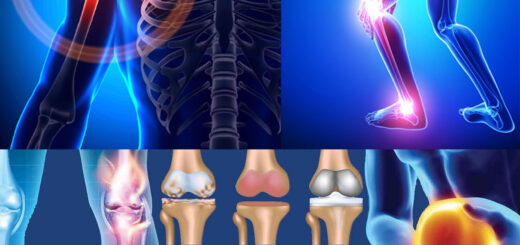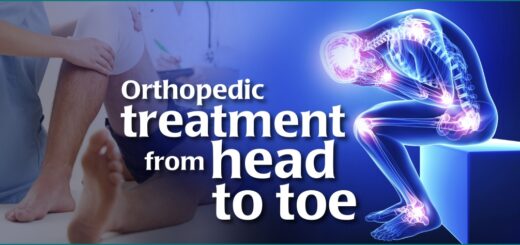Osteoporosis & Improve your bone health – Best Orthopaedic Surgeon in Mumbai & Navi Mumbai
Osteoporosis is a health condition that weakens bones, making them fragile and more likely to break. It develops slowly over several years and is often only diagnosed after a sudden impact causes a bone to break (fracture). The most common injuries in people with osteoporosis are: broken wrist, broken hip or broken spinal bones (vertebrae).
Osteoporosis is not usually painful until a bone is broken, but broken bones in the spine can result in long-term pain.
Osteoporosis & Improve your bone health – Best Orthopaedic Surgeon in Mumbai & Navi MumbaiOsteoporosis
Peak Bone Mass
The likelihood to develop osteoporosis depends partly on the bone mass attained in youth. The higher the peak bone mass, the more bone one has “in the bank” and hence one is less likely to develop osteoporosis as their given age. Most people reach their peak bone mass by age 30.
Causes of Osteoporosis
Bone is a living tissue that is constantly being broken down and replaced. During young age, the body makes new bone faster than it breaks down old bone and the bone mass increases. Osteoporosis occurs when the creation of new bone doesn’t keep up with the loss of old bone.
Osteopenia
The stage before osteoporosis is called osteopenia. This is when there is lower bone density than the average for your age, but not low enough to be classed as osteoporosis.
Osteopenia does not always lead to osteoporosis. It depends on many factors.
Menopause
Women lose bone rapidly in the first few years after the menopause. Women are more at risk of osteoporosis than men, particularly if the menopause begins early (before the age of 45) or they’ve had their ovaries removed.
Other Factors
- Taking high-dose steroid tablets for more than 3 months.
- Medical conditions – such as inflammatory conditions, hormone-related conditions, or malabsorption problems.
- Family history of osteoporosis – particularly a hip fracture in a parent.
- Long-term use of certain medicines that can affect bone strength or hormone levels, such as anti-oestrogen tablets that many women take after breast cancer
- Eating disorder such as anorexia or bulimia
- Low body mass index (BMI)
- Not exercising regularly
- Heavy drinking and smoking
Diagnosis of Osteoporosis
Osteoporosis & Improve your bone health – Best Orthopaedic Surgeon in Mumbai & Navi MumbaiDexa Scanner
The bone strength can be measured using a bone density scan (DEXA Scan). It’s a short, painless procedure that takes about 10 to 20 minutes. The result compares your bone density to that of a healthy young adult. The difference is calculated as a standard deviation (SD) and is called a T score.
- A T score of above -1 SD is normal
- A T Score of between -1 and -2.5 SD shows bone loss and is defined as osteopenia
- A T Score of below -2.5 shows bone loss and is defined as osteoporosis
Treatment and Prevention of Osteoporosis
A number of different medicines are used to treat osteoporosis (and sometimes osteopenia).
Bisphosphonates
Bisphosphonates slow the rate at which the bone is broken down in the body. This maintains bone density and reduces your risk of a broken bone. They can be given as a tablet or injection. Bisphosphonates usually take 6 to 12 months to work, and you may be advised to take them for 5 years or longer.
The main side effects associated with bisphosphonates include: Gastritis, swallowing problems, stomach pain. Osteonecrosis of the jaw is a rare side effect hence any dental problems, require a check-up before you start treatment with bisphosphonates.
Selective oestrogen receptor modulators (SERMs)
SERMs are medicines that have a similar effect on bone as the hormone oestrogen. They help to maintain bone density and reduce the risk of fracture, particularly of the spine.
Side effects associated include: hot flushes, leg cramps & a potential increased risk of blood clots
Parathyroid hormone
Parathyroid hormone regulates the amount of calcium in bone. Parathyroid hormone treatments (such as teriparatide) are used to stimulate cells that create new bone. They’re given by injection. Parathyroid hormone can increase bone density.
Calcium and Vitamin D supplements
Calcium is the main mineral found in bone, the recommended amount is 700 milligrams (mg) of calcium a day, which most people should be able to get from a varied diet that contains good sources of calcium. Calcium-rich foods include: leafy green vegetables, dried fruit, tofu, low fat dairy products like yoghurt & milk.
Vitamin D helps the body absorb calcium. All adults should have 10 micrograms of vitamin D a day.
In osteoporosis, you may need more calcium, usually require a supplement of both Vitamin D & Calcium. Supplements of Calcium & Vitamin D should be started after consulting your doctor.
HRT (Hormone Replacement Therapy)
HRT has shown to keep bones strong and reduce the risk of breaking a bone during treatment. However, HRT is not specifically recommended for treating osteoporosis and is rarely used for this purpose. This is because HRT slightly increases the risk of developing certain conditions – such as breast cancer, endometrial cancer, ovarian cancer, stroke and venous thromboembolism – more than it lowers the risk of osteoporosis.
Testosterone treatment
In men, testosterone treatment can be useful when osteoporosis is caused by low levels of male sex hormones.
Prevention of Osteoporosis
Regular exercise
Regular exercise is essential. Adults should do at least 3 hours of moderate-intensity aerobic activity, such as cycling, jogging or fast walking, every week.
Weight-bearing exercise and resistance exercise are particularly important for improving bone density and helping to prevent osteoporosis.
Healthy eating and vitamin D supplements
Eating a healthy, balanced diet is recommended for everyone. It can help prevent many serious health conditions, including heart disease, diabetes and many forms of cancer, as well as osteoporosis. Adequate dietary calcium & vitamin D is important for maintaining strong bones.
Lifestyle Changes
Other lifestyle factors that can help prevent osteoporosis include:
- Quitting Smoking – smoking is associated with an increased risk of osteoporosis
- Limiting Alcohol intake – not drinking more than 14 units of alcohol a week
- Avoiding Sedentary life style.
Get some sun!
Most people can make enough vitamin D from being out in the sun daily for short periods with their forearms, hands or lower legs uncovered and without sunscreen especially from 11am to 3pm.
It’s not known exactly how much time is needed in the sun to make enough vitamin D to meet the body’s requirements. But one should be careful not to burn in the sun. The body can’t make vitamin D if one is sitting indoors by a sunny window because ultraviolet B (UVB) rays can’t get through the glass.
Dr Gautam Tawari is one of best Orthopaedic & Sports surgeon in Mumbai, India. He has trained in the UK and has consultant experience from the UK. Diagnosis and treatment of osteoporosis is an integral part of his practice and he follows best practice protocols for treatment of osteoporosis.
To make an clinic appointment in/near for location, please follow the links below.
visit: www.gautamtawari.com or contact on – 9619618071 / 8291010015.



